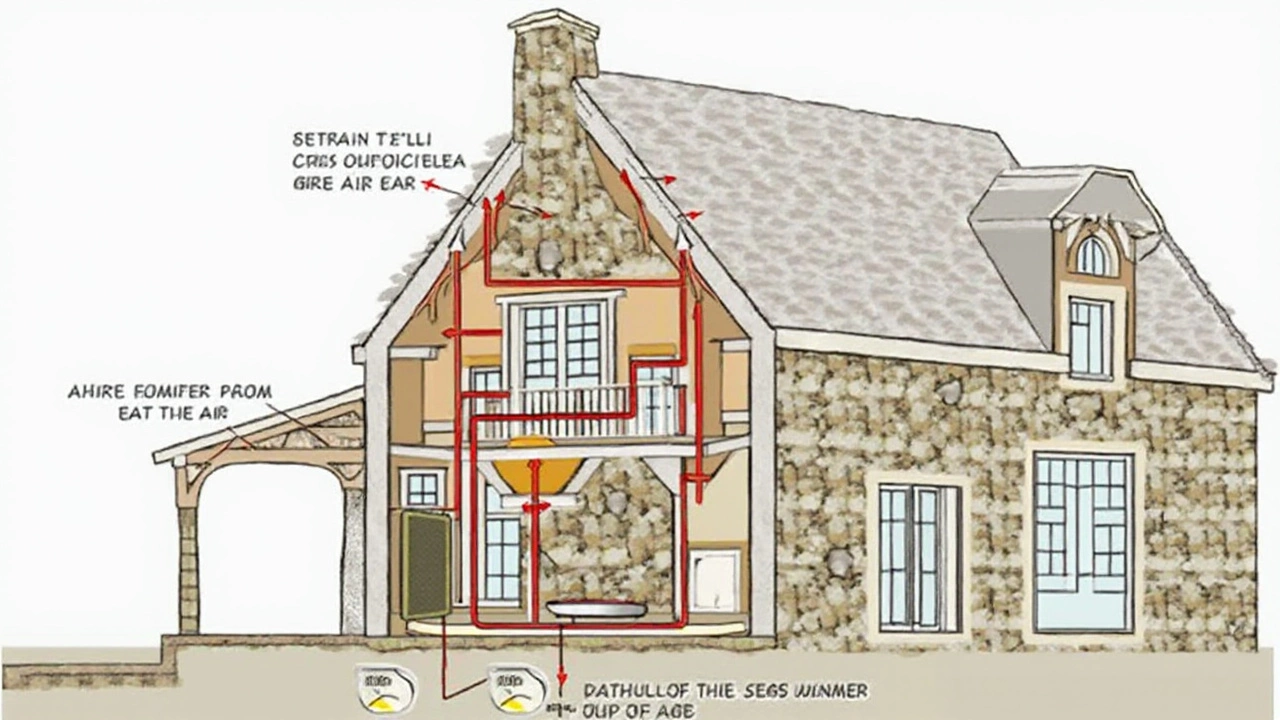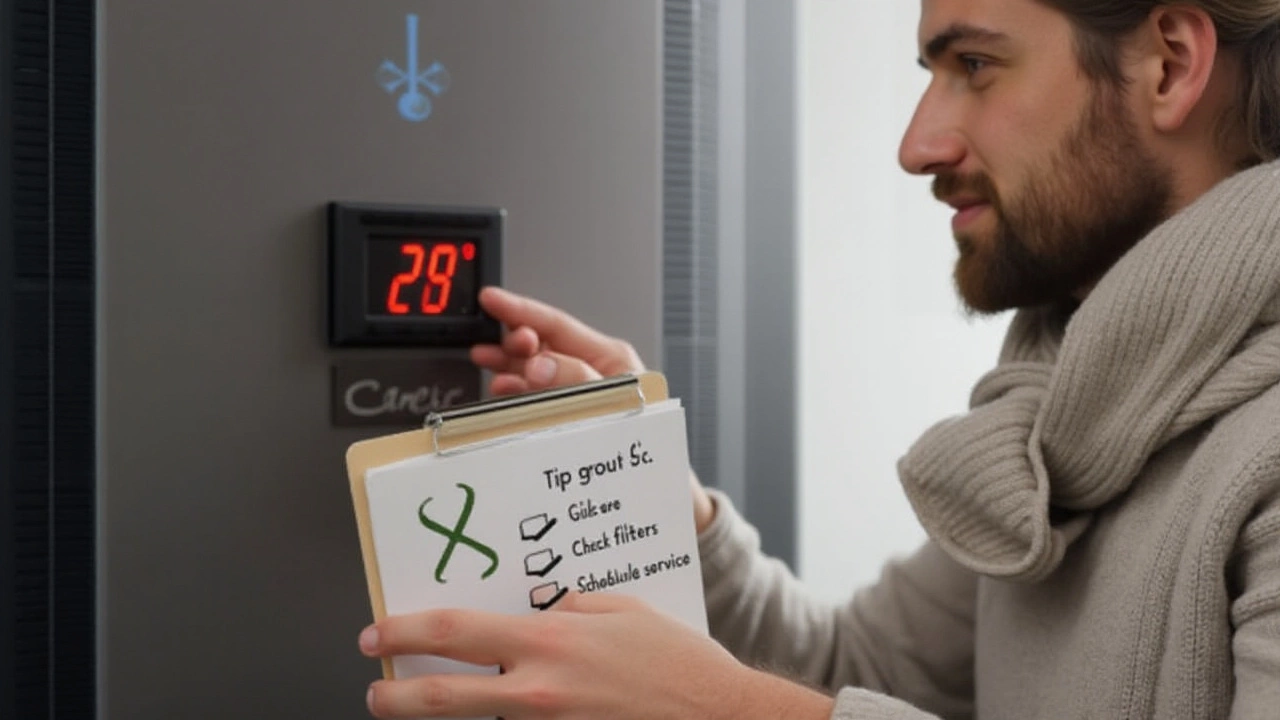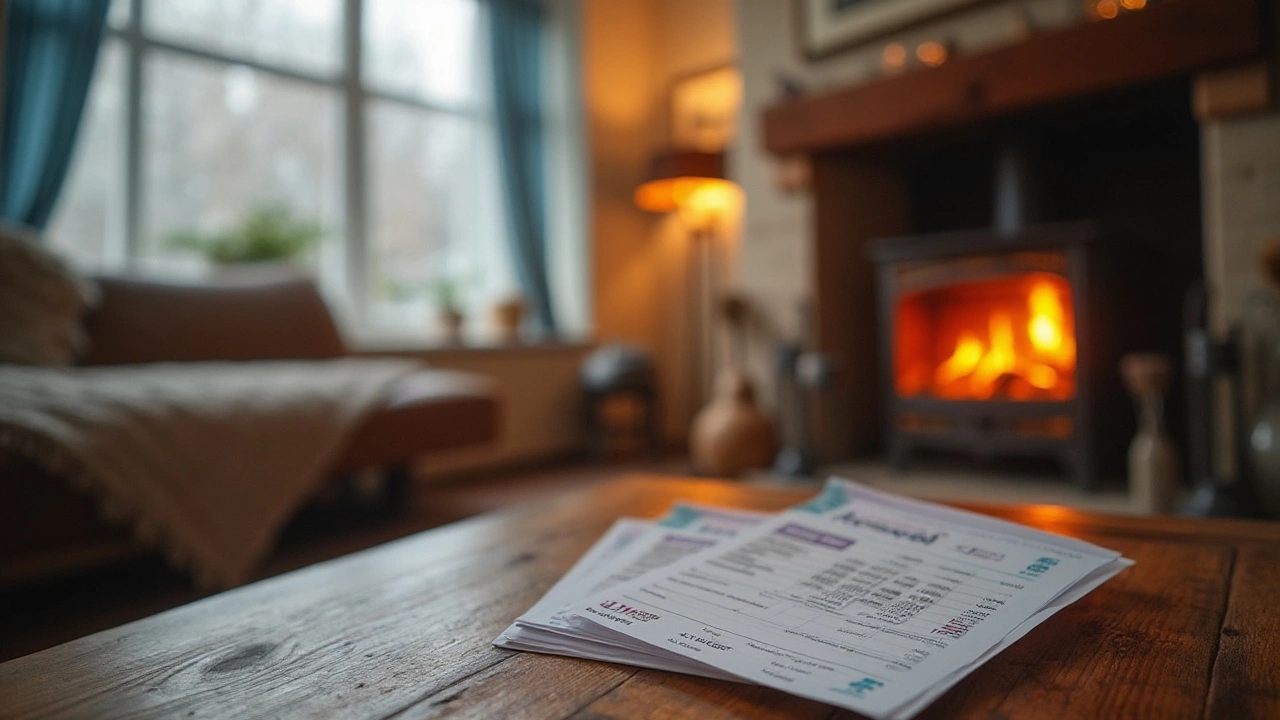When it comes to keeping our homes cozy during colder months, or cool when the sun hits hard, heat pumps stand out as an efficient choice. But like any trusted appliance, they're not without their limitations. One crucial aspect homeowners often overlook is the role temperature plays in a heat pump's efficiency.
Most heat pumps are designed to operate optimally within a particular temperature range. Stray too far outside that zone and you might notice a dip in performance. While milder climates let these marvels shine nearly year-round, more extreme conditions can push the limits of what they can handle.
Understanding how your heat pump operates will not only help you recognize signs of inefficiency but also arm you with the knowledge to ensure it runs effectively through each season. In the sections that follow, we'll dive into how temperatures affect your unit and what you can do to sidestep any issues.
- Understanding Heat Pump Functionality
- Temperature Impact on Efficiency
- Signs of Reduced Performance
- Tips for Maximizing Efficiency
Understanding Heat Pump Functionality
Heat pumps are an impressive piece of technology, bridging the gap between heating and cooling with an extraordinary blend of science and design. At the heart of their operation lies the principle of heat transfer. Simply put, a heat pump doesn't generate heat like a furnace. Instead, it moves heat from one place to another, which is where it finds its incredible efficiency. During winter, it extracts heat from the outside air, no matter how chilly, and transfers it indoors. In summer, this process is reversed. When temperatures are scorching, it acts like a reverse cycle air conditioner, removing heat from your house to maintain a cool interior. The remarkable thing about this process is that it uses a remarkably small amount of electricity, making it an energy-smart choice for year-round climate control in many homes.
Inside a heat pump, you'll find several core components that work together seamlessly to make this all happen. This includes the evaporator and condenser coils, a compressor, and an expansion valve. During the cooling process, the evaporator coil inside your home absorbs heat from the indoor air. This heat-laden refrigerant then courses to the outdoor unit, where the compressor pressurizes the refrigerant and sends it through the outdoor condenser coil. Here, the heat is expelled, releasing it into the outside air. The cycle concludes as the refrigerant flows back inside to the evaporator, ready to repeat the process. Likewise, during heating mode, the direction of refrigerant flow is reversed, thanks to a component known as a reversing valve, allowing the pump to pull in exterior warmth and transfer it indoors. According to the Department of Energy, heat pumps can reduce electricity use for heating by approximately 50% compared to electric resistance heating like furnaces and baseboard heaters.
It's not just about the parts though; it's also about the smart controls. Many heat pumps now come with intelligent thermostats that adapt to your schedule. They learn your preferences, adjust settings automatically, and even give you real-time reports through your smartphone. Such smart features enhance ease of use and can lead to further savings, cementing the heat pump's place as a favorite in modern HVAC options. An added bonus is how environmentally friendly they are. By not burning fossil fuels, they produce fewer carbon emissions. When paired with a renewable energy source, such as solar panels, their operation approaches a zero-emissions level, an enticing prospect for those of us mindful of our environmental footprint.
When you delve into the specifics, the efficiency of a heat pump is oftentimes measured by its Coefficient of Performance (COP) during heating and its Seasonal Energy Efficiency Ratio (SEER) during cooling. These ratios essentially tell us how much cooling or heating a unit provides compared to the amount of electrical energy it consumes. The higher these numbers, the more efficient the device. It's crucial to remember that the actual efficiency can fluctuate based on several factors including the specifics of your local climate, the precise size of your pump, and the integrity of your home’s insulation. Keeping these determinants in mind will help ensure that you're maximizing the benefits offered by this ingenious system.
The U.S. Department of Energy explains, "Heat pumps offer an energy-efficient alternative to furnaces and air conditioners for climates with moderate heating and cooling needs."With a heat pump system in place, handling the spectrum of seasonal changes becomes a streamlined affair, though always with the consideration of temperature limits and managing expectations. Whether you're bracing for frosty nights or gearing up to beat the heat, understanding how these systems operate can help you appreciate why and where they operate most effectively and the nuances tied to their operation.

Temperature Impact on Efficiency
Heat pumps are a central part of many homes’ heating, ventilation, and air conditioning (HVAC) systems, particularly appreciated for their dual role in providing both heating and cooling. The efficiency of a heat pump largely hinges on the surrounding air temperature. When the outdoor temperature falls, the pump must work harder to extract heat from the air, which can reduce efficiency. Most models maintain optimal efficiency until the mercury drops to around 25 to 30 degrees Fahrenheit. Below this range, the performance decreases significantly, and the system may require supplemental heating sources, like electric resistance heaters, to maintain comfort levels.
Interestingly, the principle behind heat pumps is akin to that of a refrigerator, extracting heat from one location and transferring it to another. Commonly, a heat pump performs efficiently when the temperature differential between the inside and outside is not extreme. However, as temperatures drop or soar beyond comfort zones, the energy consumption rises, often reflected in higher utility bills. A surprising fact is that even at moderate low temperatures, say 40 degrees Fahrenheit, the efficiency can still remain high since the heat pump is moving existing heat rather than generating it through combustion or resistance heating.
Research by the U.S. Department of Energy reveals that modern heat pumps can reduce electricity use for heating by approximately 50% compared to electric resistance heating. But, when winter's chill sets in, the air source models may need to activate backup heat, which is less efficient. A model with a variable-speed compressor can adjust the motor speed to the home's needs, thus boosting efficiency. These kinds of insights demonstrate why understanding the impact of temperature on your heat pump's performance is crucial for homeowners looking to manage costs and comfort effectively.
According to a study by The National Renewable Energy Laboratory, "Air source heat pumps can operate efficiently in a wide variety of climates, even where temperatures typically drop below freezing."
There's a growing trend of installing ground source or geothermal heat pumps, which are largely unaffected by air temperature changes. Such systems take advantage of the earth's relatively stable sub-surface temperature. Geothermal systems can offer efficiency levels exceeding 300-600%, especially in climates that experience temperature extremes. The investment in these systems, although initially higher, offers substantial savings on HVAC costs over time. Understanding these temperature impacts marks the crucial first step in ensuring your heating and cooling system functions at its peak in every season.

Signs of Reduced Performance
There's nothing worse than realizing your heat pump isn't kicking out the warm or cool air you rely on at home. Recognizing the signs of reduced performance early can prevent bigger headaches, and possibly save on energy costs. The first clue that something might be off is when your energy bills skyrocket unexpectedly. If your heat pump is straining to maintain your desired temperature, it's likely working overtime, consuming more power than usual. Pay close attention to how often it's running. A pump cycling constantly may mean it’s time for a bit of TLC or even a professional check-up.
Another giveaway is inconsistent temperature levels inside your home. If there's a noticeable difference between room temperatures, it could signal that your pump's airflow is uneven or disrupted. Strange noises that crop up from nowhere are other potential indicators. While a heat pump isn't silent, odd chattering, grinding, or squeaking noises aren't typical. These could denote problems with the motor or a loose component in need of tightening.
It's also telling if you feel a drop in the usual airflow coming from your vents. When air can barely be felt, there's a chance you've got blocked or dirty filters holding things back. Check these filters regularly and keep them clean. By doing so, you're ensuring your heat pump keeps performing at its best. Not to be neglected is the need to keep the outdoor unit free of debris. Leaves, snow, and ice can pile up, smothering the unit and impeding efficiency. A simple way to maintain it is by sweeping away any debris and making sure there's at least two feet of clearance around it.
On occasion, unusual smells can escape your heat pump, too. Don't dismiss them as harmless. Odors may range from mildewy scents, indicating potential mold growth inside the unit, to a burning smell, which might mean electrical components are overheating. Addressing these smells promptly can prevent considerable damage. If in doubt, it's wise to turn off the system and call a professional technician.
Keeping an eye out for these signs empowers you to act before minor issues morph into major repairs. As they say, prevention is better (and often cheaper) than cure.
One HVAC expert famously remarked, "A well-maintained heat pump is an efficient heat pump." Wise words that underscore the importance of routine check-ups and maintenance—which, in the long run, will save you a heap of trouble.

Tips for Maximizing Efficiency
To get the best performance out of your heat pump, there are several strategies you can employ. Regular maintenance tops the list. A well-maintained system not only runs more efficiently but can also help stave off costly repairs. To do this, ensure to have your unit checked by a professional at least once a year. During these check-ups, technicians will clean critical components, check refrigerant levels, and test for leaks. This keeps the system in peak condition and helps it run smoother, especially during extreme temperatures.
Another key aspect in enhancing your heat pump's function is proper insulation. Homes that are well-insulated can significantly reduce the workload on your HVAC system. Checking the insulation levels in your attic, walls, and floors might reveal areas that need improvement. Additional insulation helps trap the heat where it's needed, ensuring your pump doesn't have to labor as hard, which can directly cut down energy costs and improve the unit's efficiency remarkably.
Installing a programmable thermostat is a smart move. These devices enable you to set specific temperatures for different times of the day, reducing the amount of stress on your heat pump during peak hours. You can program them to lower temperatures when no one is home and to increase them shortly before your return, keeping the environment comfortable without unnecessary power use. It's a balance between efficient heating and energy savings that every homeowner should consider.
"Adhering to simple maintenance routines can extend your heat pump’s efficiency and lifespan significantly," advises Emily Welch, a senior HVAC specialist.
Don't overlook the importance of cleaning and clearing the area around your outdoor unit. Debris like leaves, dirt, and snow can obstruct airflow, forcing your heat pump to work harder to achieve the desired indoor climate. Ideally, you should check and tidy the unit area at the start of every season to ensure it remains free of obstructions. This small act contributes greatly to the unit's efficiency, allowing it to operate without extra strain.
Additionally, consider investing in a system with a higher SEER (Seasonal Energy Efficiency Ratio) rating. Modern heat pumps with higher ratings are designed to be more energy-efficient than their older counterparts. While the initial cost might be more, the savings on your energy bill over time can easily surpass the upfront investment. By selecting the right pump model, you optimize both performance and cost-efficiency.

